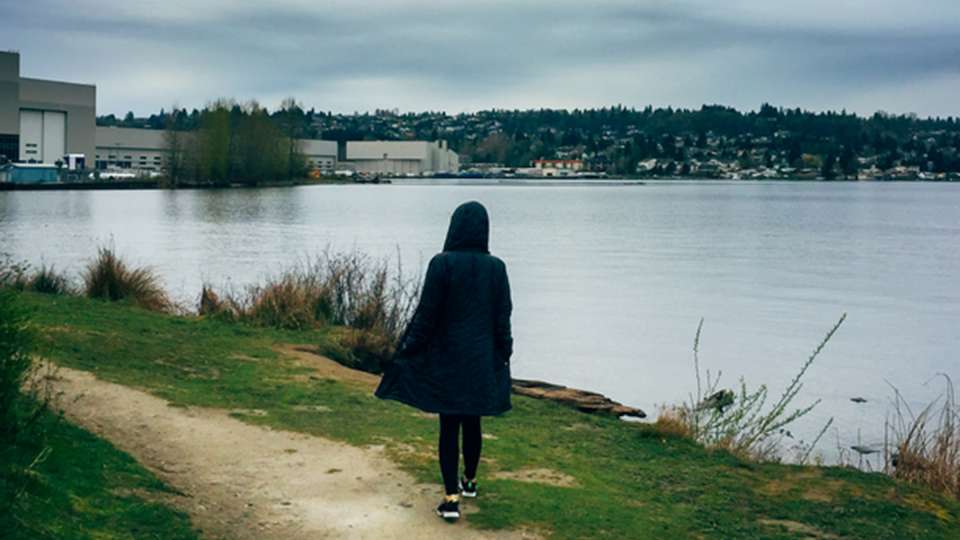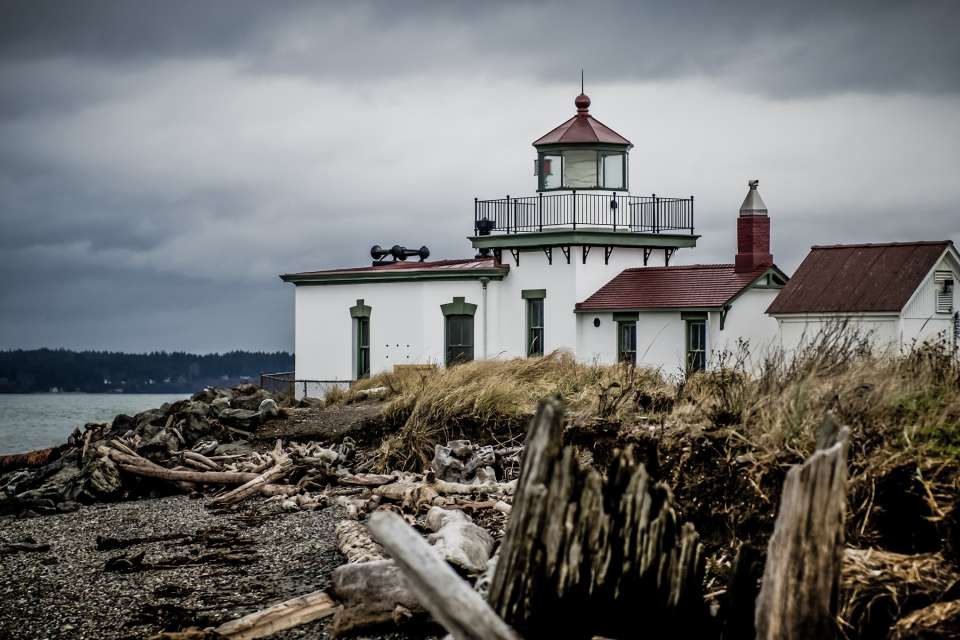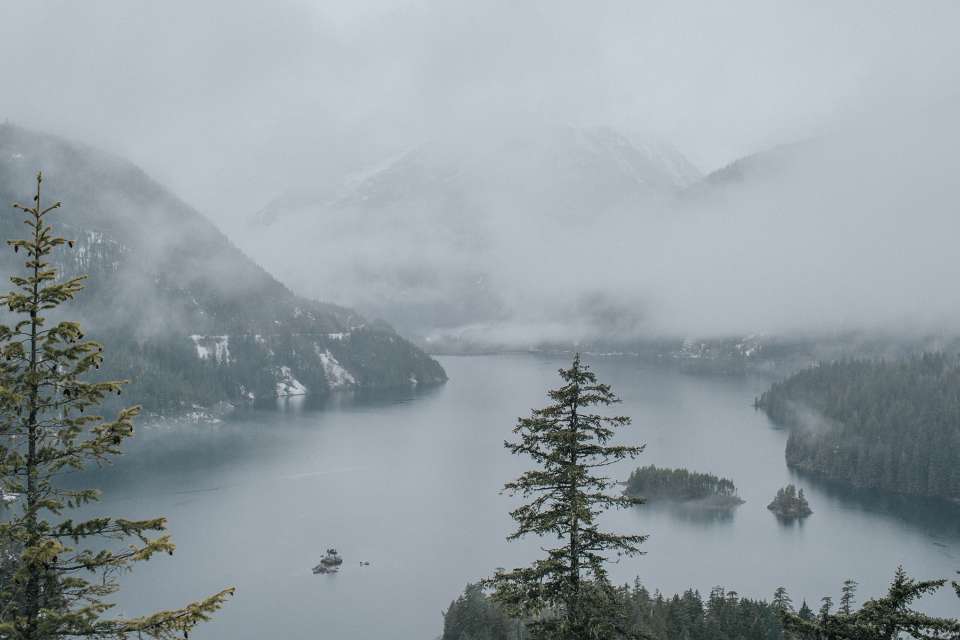
It’s officially winter, and we all know what that means: Dark days and dreariness. If you live east of the Cascades, you’ve probably already seen lots of snow, and if you live closer to the coast, you know we have months left in our annual rainy season—which could end up being just as cold and wet as it was last winter.
Instead of retreating to your couch and blanket when the weather’s less than desirable, consider braving the elements and finding a park, trail or other outdoor spot to visit. That might seem counterintuitive, since many people in this region experience seasonal affective disorder, or SAD, when our daylight hours grow shorter.
Yes, you’ll need rain gear—and patience—but going outdoors even on icky days could bring health benefits.
“I would encourage people to get out regardless of weather. Even just getting your steps in can be especially important on days that are gray and cold, since physical activity is important for both mental and physical health,” says Pooja Tandon, M.D., an assistant professor of pediatrics at the University of Washington School of Medicine who studies the relationship between physical activity and children’s health.
Tandon and colleagues recently reviewed studies analyzing the many ways exposure to nature can affect health. Research shows that benefits of being in nature range from reduced anxiety and depression to better sleep, eyesight, immune function and better outcomes for people who have chronic conditions like congestive heart failure or ADHD.

Nature vs. urban nature
But how much and what kind of nature activities should you partake in to reap the benefits? After all, definitions of getting out in nature can range from hiking in the Olympic National Forest to watching a forest scene via a virtual reality headset.
For Tandon and colleagues, nature includes a spectrum of different types of exposure to elements from the natural world, from an office with a view of green space to those Amazon spheres to backcountry wilderness. And what exactly you consider nature isn’t as important as how often you’re exposed to it, says Kathleen Wolf, Ph.D., a researcher in the School of Environmental and Forest Sciences at the University of Washington who is a co-author on the study with Tandon and conducts research on nearby nature and human health.
“Research doesn’t support the claim that you can only get health benefits from being in the wilderness. While wilderness experiences are beneficial, it’s just as important to have nature incorporated into your daily life,” she says.
Aside from simply having nature present in urban spaces, it’s also important to determine what kind of urban nature will have the best effect on the communities it exists to serve. For example, an outdoor space where patients with Alzheimer’s disease can take leisurely strolls is going to look very different from a forest school for children. Designing the space with the users in mind is more effective than having a one-size-fits-all approach, Wolf says.

A walk a day keeps the doctor away?
While every doctor will tell you that any exercise is better than no exercise, being active outdoors is shown to be better for you than, say, activity in a gym, Wolf says.
If nature is indeed so good for our health, it begs the question: Could it be used to treat medical conditions? Some doctors are already prescribing nature exposure to their patients, a practice known as ecotherapy. Others are adopting the practice of parks prescription.
U.S. healthcare spending is astronomical—$3.3 trillion in 2016. Spending time in nature could be a great, low-cost way to help people stay and get well, both Wolf and Tandon say. Wolf is currently researching how exposure to nature might lower healthcare costs.
“Going for a walk in the park wouldn’t completely eliminate health problems, but if we can shave off five, 15 or even 20 percent of what we spend on personal counseling, medications and hospital treatments, that is a substantial amount of money,” says Wolf. “It would also help in recognizing the importance of investment on the community level rather than when you’re finally sick and have to go to the doctor.”
There’s also a possibility of nature being helpful for prevention of illness as well as treatment for it—similar to how it’s important to get enough physical activity and sleep, Tandon says.
Ultimately, more research is needed to determine what dosage of nature is most effective, and for whom, both Tandon and Wolf say. The paper they co-authored outlines several areas where scientists could prioritize their efforts, including whether technological and virtual nature is helpful or counterintuitive, and how access to and preferences of nature vary across socioeconomic and cultural differences.
Getting outside can also be an equity issue, Wolf says. Not everyone has time to plan long hiking or camping trips or money to buy the needed clothing and gear. And some people might not want to spend the day in the rain, mud and wind on top of a mountain, but would be perfectly happy taking their lunch break at the city park down the street from where they work.
“We all have different preferences for what nature is, but at some deeper level we all have some connection to or affinity for nature,” Tandon says.

Into the woods
If you do decide to venture into the wilderness, here are some winter outdoor safety tips from Andrew Luks, M.D., a wilderness medicine expert, to give you peace of mind:
Check the weather forecast before going out. There are some forecasts that are just no-go conditions or at least warrant changing the plan. Weather can also change quickly.
Check road conditions. You should also have tire chains and practice putting them on ahead of time. It’s also a good idea to travel with a shovel in your car, as well as extra food and water.
Check the avalanche forecast. Following a big snow storm, avalanche conditions can be a concern. You can check conditions via the Northwest Avalanche Center.
Carry the right clothing. Have layers of clothing you can put on or take off based on how cold or warm you are. It’s a good idea to carry an extra layer of dry clothes (such as long underwear) in case the clothes you’re wearing get wet.
Pack plenty of food and water. Taking in calories and maintaining adequate hydration can help prevent hypothermia and frostbite.
Avoid wearing constrictive clothing. Boots, socks and gloves that are too small or tight can cut off circulation to your extremities and put you at risk for frostbite. But make sure your skin is covered from the cold and wind.
Don’t touch metal with your bare hands. When it’s below freezing, use liner gloves when you need to take your gloves off and touch metal objects.
Protect yourself from the sun. If you’re traveling in snow and it’s a sunny day, particularly if you’re at high altitude, it’s very easy to burn the surface layer of your eyes, a condition called snow blindness. To prevent this from happening, always wear sunglasses. And sunscreen is important because sunlight can reflect off snow and give you sunburns.
Carry a headlamp. Days are short in the winter, and getting caught in the dark isn’t fun.

 Healthy ideas for your inbox
Healthy ideas for your inbox





